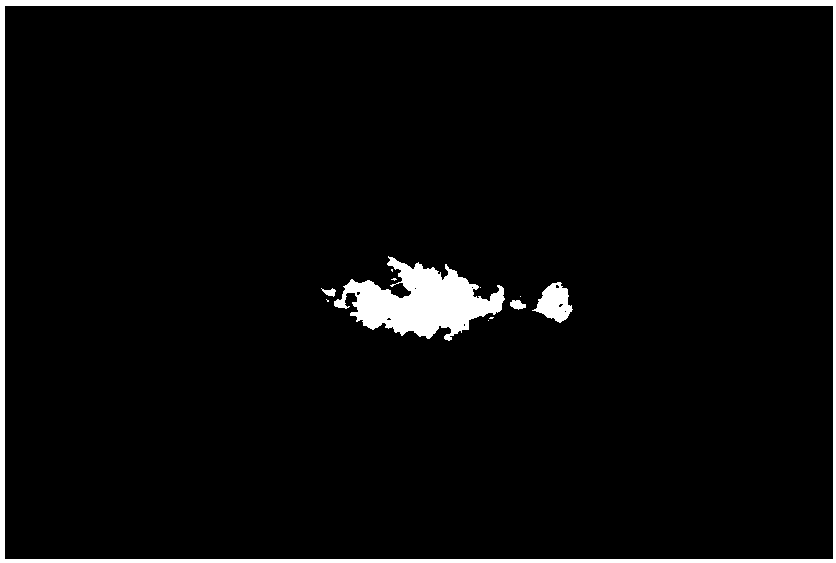Decellularized scaffold material for regeneration of salivary gland and preparation method thereof
A technology of decellularized scaffolds and cell scaffolds, applied in tissue regeneration, medical science, prostheses, etc., can solve problems such as lack of salivary gland regeneration, achieve the effects of reducing chewing, improving quality of life, and improving saliva secretion
- Summary
- Abstract
- Description
- Claims
- Application Information
AI Technical Summary
Problems solved by technology
Method used
Image
Examples
Embodiment 1
[0043] Example 1: Submandibular Gland Decellularization Treatment
[0044]
[0045] (1) Take 8-week-old male rats, after intraperitoneal anesthesia with chloral hydrate injection, T-shape neck incision to expose bilateral submandibular glands, remove the capsule, cut the submandibular glands and keep the submandibular gland ducts as much as possible; immerse in 0.01mol / L heparinized PBS (phosphate buffer saline, heparin concentration 25 μg / ml), shaking on a shaker for 15 minutes to remove blood;
[0046] (2) Add 12.5% SDS (sodium dodecyl sulfate) aqueous solution of 1000 times the volume of the sample, put it in a shaker, shake and cultivate at room temperature at 200 rpm for 32 hours, and replace the SDS solution every 8 hours;
[0047] (3) Add sterile deionized water and shake for 4 hours to remove residual SDS;
[0048] (4) Add 1% Triton X-100 (polyethylene glycol octyl phenyl ether), and culture for 2 hours;
[0049] (5) Add 0.02mg / ml of DNAaseI (deoxyribonuclease I)...
Embodiment 2
[0060] Example 2: Isolation of Rat Submandibular Gland Cells
[0061] (1) Take 3-4 week old male rats, after intraperitoneal injection of anesthesia, peel off the capsule after incision of the neck, separate and extract the submandibular gland, and cut the submandibular gland tissue into pieces in the sterile operating table;
[0062] (2) Place the above tissue in the digestion solution containing 3mg / ml type I collagenase and 4mg / ml Dispase (neutral proteolytic enzyme), digest at 37°C for 1 hour, and shake constantly during the period. After the digestion was completed, the cells were collected through a 70 μm cell sieve, centrifuged at 1200 rpm for 5 min, and the supernatant was discarded and resuspended with MEGM medium to form a single cell suspension.
Embodiment 3
[0063] Example 3: Recellularization and three-dimensional culture of decellularized submandibular gland
[0064] (1) Slowly inject the single cell suspension described in Example 2 into the decellularized scaffold material through the submandibular gland duct with a 1ml syringe to complete the recellularization process;
[0065] (2) Place the cell-scaffold complex statically in the MEGM culture medium, and put it into an incubator to cultivate for 12 hours, so as to facilitate cell adhesion;
[0066] (3) Finally, put the cell-scaffold complex into a 50ml rotary three-dimensional organ culture system, add MEGM medium, adjust the rotation speed to 10rpm to ensure that the cell-scaffold complex is in a suspended state, and place it at 37°C, 5% CO 2 in the incubator. The medium was changed every 2 days, and the culture time was 14 days.
PUM
 Login to View More
Login to View More Abstract
Description
Claims
Application Information
 Login to View More
Login to View More - R&D
- Intellectual Property
- Life Sciences
- Materials
- Tech Scout
- Unparalleled Data Quality
- Higher Quality Content
- 60% Fewer Hallucinations
Browse by: Latest US Patents, China's latest patents, Technical Efficacy Thesaurus, Application Domain, Technology Topic, Popular Technical Reports.
© 2025 PatSnap. All rights reserved.Legal|Privacy policy|Modern Slavery Act Transparency Statement|Sitemap|About US| Contact US: help@patsnap.com



